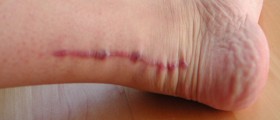
The hamstring is a group of muscles stretching along the back of your thigh. Therefore, a hamstring injury signifies a condition taking place once you pull or strain this group of muscles on one of your legs. This may result in a partial or a complete muscle tear, depending on the severity of your injury.
Risk Groups for Hamstring Injuries
Due to the characteristic features of a hamstring injury, professional sports players or athletes belong to the risk group. Basically, all physical activities which involve quick and abrupt stopping and sprinting taking place interchangeably, may end up with this type of injury. Hence, runners and dancers may be prone to hamstring injury too.
In most cases, this injury is nothing too serious and proper resting and care will allow you to recover in the shortest time span possible. Additionally, ice compresses and painkillers may provide more assistance. If the injury refuses to heal after these measures have been put to action, surgery may be necessary.
Types of Hamstring Injury
Any hamstring injury may be classified according to its severity. So, a mild hamstring injury causes minimal pain and discomfort, making you lose just a bit of your normal strength. This type heals fast and requires no additional treatments.
Next, the injury may be moderate, leading to a partial tear of the hamstring muscle. This results in pain and loss of strength. Finally, the injury may be severe, manifesting through a complete tear of hamstring muscles. Severe pain and discomfort appear in this case and your muscles may lose quite a great deal of their strength. Here, surgery may be the only way of treatment.
Treatments for Hamstring Injury
The first step of the treatment involves taking care of the swelling and pain. In order to achieve this, you need to rest and stop participating in any kind of advanced physical activity, allowing your muscles enough time to heal. Help your injured leg by using a cane instead of placing all your weigh upon it. Ice packs, bandages and rest with elevation of the leg above the heart level are all recommended steps. Finally, if pain is bothering you, take some over-the-counter medications for pain relief.
Once your hamstring gets better, you may undergo rehabilitation therapy through which your injured leg will recover completely and regain its flexibility and strength. You need to fully participate in your rehabilitation program unless you want your hamstring to get injured again. This will last for about a couple of weeks or more. Moreover, some injuries of this type require months of rehabilitation.

















Your thoughts on this
Loading...